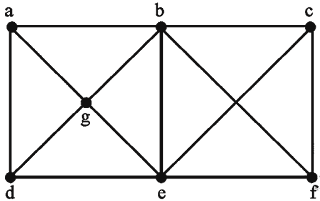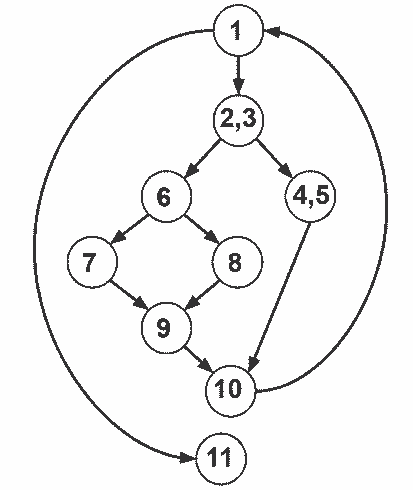UGC NET 2020 Exam Dates Postponed for below subjects
- Assamese, Malayalam, Marathi, Punjabi, Russian, Telugu, Bengali, Bodo, Kashmiri, Social Medicine & Community Health, Urdu postponed to date November 04, 2020
- Computer Science, Sociology postponed to date November 11, 2020
- Education, Geography postponed to date November 12, 2020
- Hindi postponed to date November 13, 2020
NTA UGC NET Exam June 2020 revised date sheet announced, Admit card displayed at Official Website @ugcnet.nta.nic.in
(UGC-NET) : June 2020 Date Sheet of Examination
The UGC-NET June 2020 will be held as per following Schedule. Admit Cards for the examination to be held on 24.09.2020 and 25.09.2020 have been displayed. For others same shall be displayed on the NTA website soon.NTA UGC NET 2020 Revised Exam Dates
| Date | Time | Subject Code | Subject Name | Remark |
|---|---|---|---|---|
| September 24, 2020 | 09.00AM to 12.00 Noon (IST) | 46 | Adult Education/ Continuing Education/ Andragogy/ Non Formal Education. | |
| 32 | Chinese | |||
| 62 | Comparative Study of Religions | |||
| 33 | Dogri | |||
| 44 | German | |||
| 37 | Gujarati | |||
| 50 | Indian Culture | |||
| 45 | Japanese | |||
| 21 | Kannada | |||
| 85 | Konkani | |||
| 18 | Maithili | |||
| 35 | Manipuri | |||
| 42 | Persian | |||
| 91 | Prakrit | |||
| 43 | Rajasthani | |||
| 25 | Sanskrit | |||
| 101 | Sindhi | |||
| 40 | Spanish | |||
| 70 | Tribal and Regional Language/Literature | |||
| 03.00PM to 06.00PM (IST) | 49 | Arab Culture and Islamic Studies | ||
| 29 | Arabic | |||
| 60 | Buddhist, Jaina, Gandhian and Peace Studies | |||
| 11 | Defence and Strategic Studies | |||
| 31 | Linguistics | |||
| 63 | Mass Communication and Journalism | |||
| 34 | Nepali | |||
| 23 | Oriya | |||
| 83 | Pali | |||
| 26 | Tamil | |||
| September 25, 2020 | 09.00AM to 12.00 Noon (IST) | 72 | Comparative Literature | |
| 68 | Criminology | |||
| 71 | Folk Literature | |||
| 82 | Forensic Science | |||
| 39 | French (French Version) | |||
| 66 | Museology & Conservation | |||
| 4 | Psychology | |||
| 93 | Tourism Administration and Management. | |||
| 03.00PM to 06.00PM (IST) | 67 | Archaeology | ||
| 92 | Human Rights and Duties | |||
| 59 | Library and Information Science | |||
| 3 | Philosophy | |||
| 90 | Politics including International Relations/International Studies including Defence/Strategic Studies, West Asian Studies, South East Asian Studies, African Studies,South Asian Studies, Soviet Studies, American Studies. | |||
| September 29, 2020 | 09.00AM to 12.00 Noon (IST) | 58 | Law | |
| 47 | Physical Education | |||
| 03.00PM to 06.00PM (IST) | 89 | Environmental Sciences | ||
| 65 | Performing Art - Dance/Drama/Theatre | |||
| 73 | Sanskrit traditional subjects (including) Jyotisha/Sidhanta Jyotish/ Navya Vyakarna/ Vyakarna/ Mimansa/ Navya Nyaya/ Sankhya Yoga/ Tulanatmaka Darsan/ Shukla Yajurveda/ Madhav Vedant/ Dharmasasta/ Sahitya/Puranotihasa / | |||
| 95 | Santali | |||
| 74 | Women Studies | |||
| September 30, 2020 | 09.00AM to 12.00 Noon (IST) | 17 | Management (including Business Admn. Mgt./Marketing/ Marketing Mgt./Industrial Relations and Personnel Mgt./Personnel Mgt./Financial Mgt./Co-operative Management) | |
| September 30, 2020 | 03.00PM to 06.00PM (IST) | 1 | Economics / Rural Economics /Co-operation / Demography / Development Planning/ Development Studies / Econometrics/ Applied Economics/DevelopmentEco./Business Economics | |
October 1, 2020 | 09.00AM to 12.00 Noon (IST) | 030 | English | Group-1 |
| 03.00PM to 06.00PM (IST) | Group-2 | |||
October 9, 2020 | 09.00AM to 12.00 Noon (IST) | 6 | History | |
| 03.00PM to 06.00PM (IST) | 2 | Political Science | ||
October 17, 2020 | 09.00AM to 12.00 Noon (IST) | 008 | Commerce | Group-1 |
| 03.00PM to 06.00PM (IST) | Group-2 | |||
November 04, 2020(Old Date:22.10.2020) | 09.00AM to 12.00 Noon (IST) | 36 | Assamese | |
| 22 | Malayalam | |||
| 38 | Marathi | |||
| 24 | Punjabi | |||
| 41 | Russian | |||
| 27 | Telugu | |||
| 03.00PM to 06.00PM (IST) | 19 | Bengali | ||
| 28 | Urdu | |||
| 94 | Bodo | |||
| 84 | Kashmiri | |||
| 81 | Social Medicine & Community Health | |||
| November 5, 2020 | 09.00AM to 12.00 Noon (IST) | 88 | Electronic Science | |
| 55 | Labour Welfare/Personnel Management/Industrial Relations/ Labour and Social Welfare/Human Resource Management | |||
| 16 | Music | |||
| 15 | Population Studies | |||
| 79 | Visual Art (including Drawing & Painting/Sculpture Graphics/Applied Art/History of Art) | |||
| 03.00PM to 06.00PM (IST) | 7 | Anthropology | ||
| 12 | Home Science | |||
| 14 | Public Administration | |||
| 10 | Social Work | |||
| 100 | Yoga | |||
November 11, 2020 (Old Date:07.10.2020) | 09.00AM to 12.00 Noon (IST) | 5 | Sociology | |
| 03.00PM to 06.00PM (IST) | 87 | Computer Science and Applications | ||
November 12, 2020 (Old Date : 21.10.2020) | 09.00AM to 12.00 Noon (IST) | 9 | Education | |
| 03.00PM to 06.00PM (IST) | 80 | Geography | ||
| November 13, 2020 (Old Date:23.10.2020) | 09.00AM to 12.00 Noon (IST) | 020 | Hindi | Group-1 |
| 03.00PM to 06.00PM (IST) | Group-2 |
NTA UGC NET - June 2020 Exam Dates Postponed
(14th September, 2020 Public Notice) (Old Notice) :
This notice is regarding the postponed exam dates for NTA UGC NET - June 2020 Exam
National Testing Agency, NTA has released a notice informing that the UGC NET Exam 2020 has been postponed to be conducted now from September 24, 2020, onwards. The candidates who were to appear for the exam from September 16 must note that now the exams have been postponed by a week. The downloading of the admit card will soon be released on ugc.nta.nic.in.
Visit Official Website and check updates in section LATEST @ NTA with subject "Conduct of UGC- NET June Examination, 2020.":
Public Notice by NTA for UGC NET Examination (notice date: 14th September 2020)
National Testing Agency will be conducting ICAR Examination AIEEA-UG/PG and AICE-JRF/SRF (Ph.D.) 2020-21 on 16, 17, 22 and 23 September 2020. In view of ICAR Examination AIEEA-UG/PG and AICE-JRF/SRF (Ph.D.) 2020-21 being conducted on the above mentioned dates, UGC - NET 2020 Examination will now be held from 24th September onwards, this is due to some common candidates in both exams and the requests received thereof. The exact schedule of Subject-wise and Shift-wise details will be uploaded subsequently. The downloading of Admit Cards indicating Roll Number, Examination Centre, Date, Shift and timing of Examination will be announced shortly on the official website (ugcnet.nta.nic.in) of UGC- NET Examination, 2020.
Last Month updates
NTA Exam Dates 2020 Updates : Schedule for UGC NET Exam released at official website Auguest Updates from NTA NET regarding the Exam dates : Final date for UGC NET June exam announced on Thursday, 20 August, 2020.
Visit and check Exam date updates at UGC NET official website:
Public Notice by NTA for UGC NET Examination
UGC NET Exam date :
UGC - National Eligibility Test (UGC NET) June 2020 will be conducated in September on dates (16-18) Sep, 2020 and (21-25) Sep, 2020.
Downloading of Admit Cards:
The downloading of Admit Cards indicating Roll Number, Centre, Date, Shift and timing of Examination, will commence about 15 days before the date of examination on the respective official websites of these examinations
















In class B network, 16 bits are used for Network ID and 16 bits are for Host ID part. In subnetting the bits are borrowed from Host portion.
Here, we want 64 subnets. so, we have to borrow 6 bits from host id part because 26 = 64 number of subnets we require. Subnet mask will have total 16 + 6 bits as continuous 1's. in network id and subnet id part.
Binary form of subnet mask is : 11111111.11111111.11111100.00000000
Decimal form of subnet mask is : 255.255.252.0
So, option (4) is the correct answer.